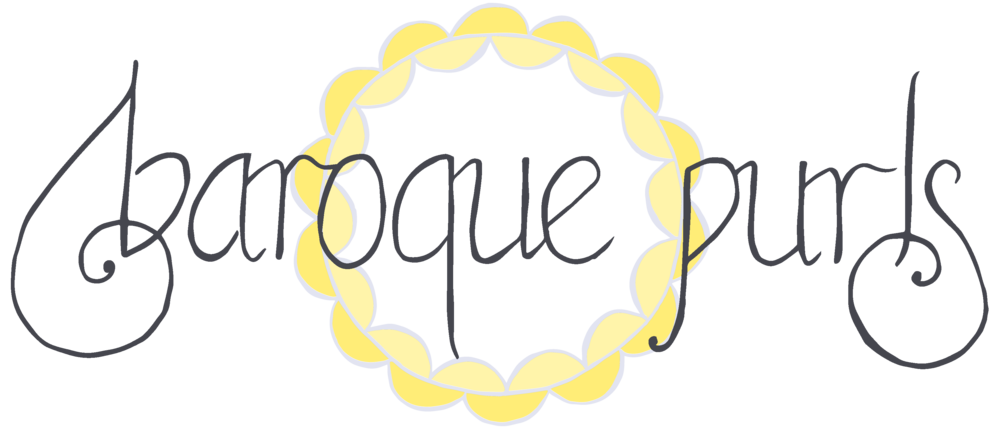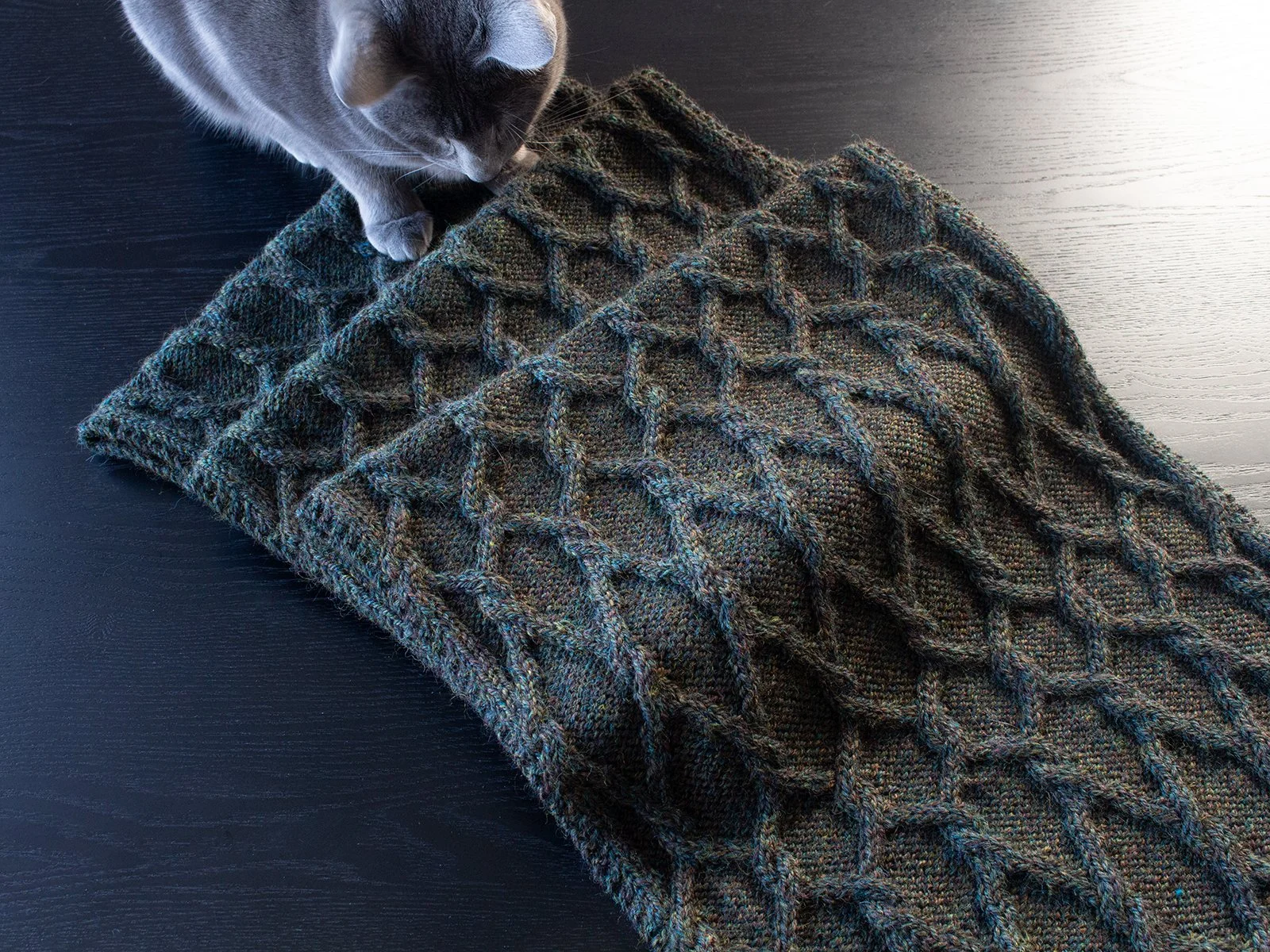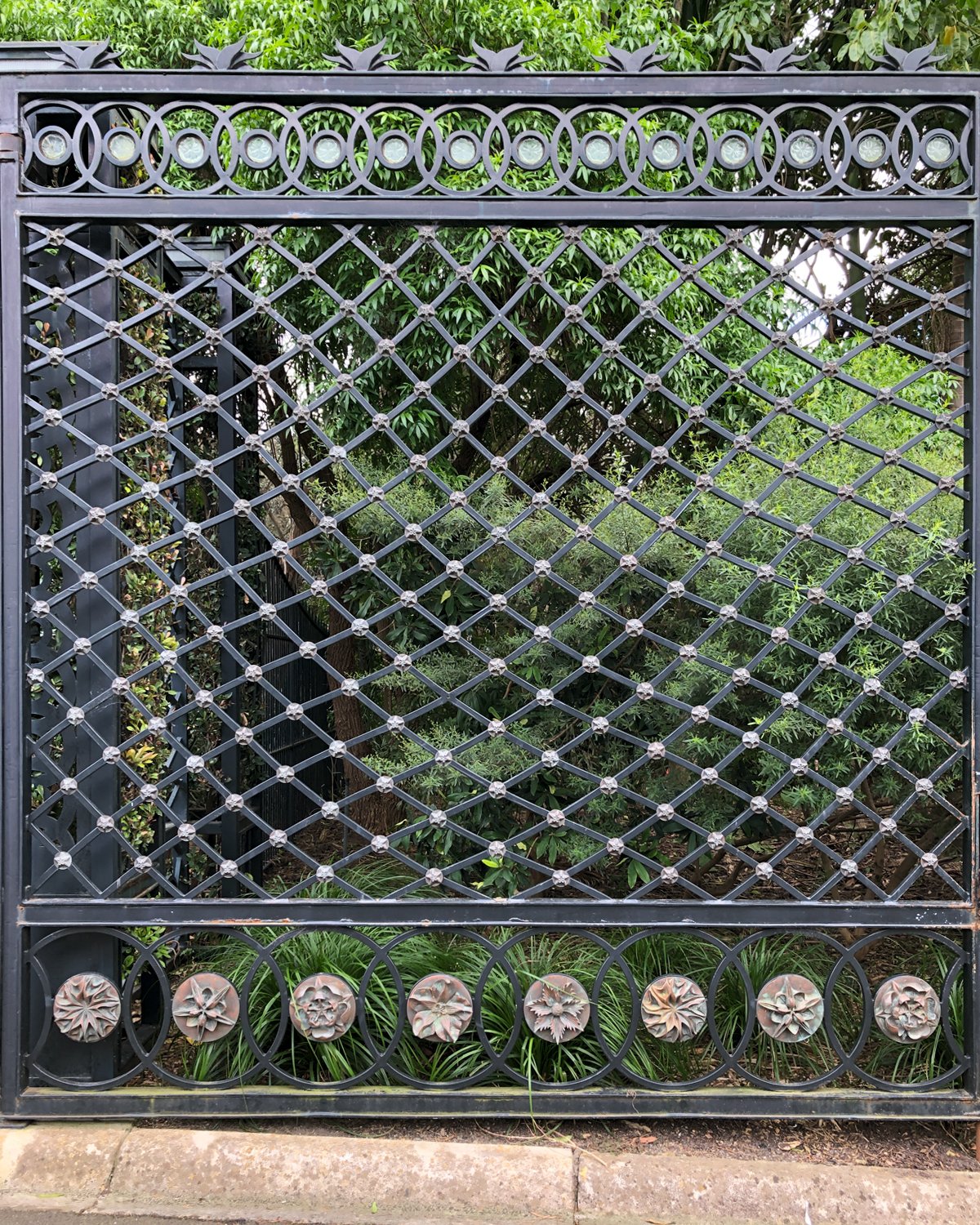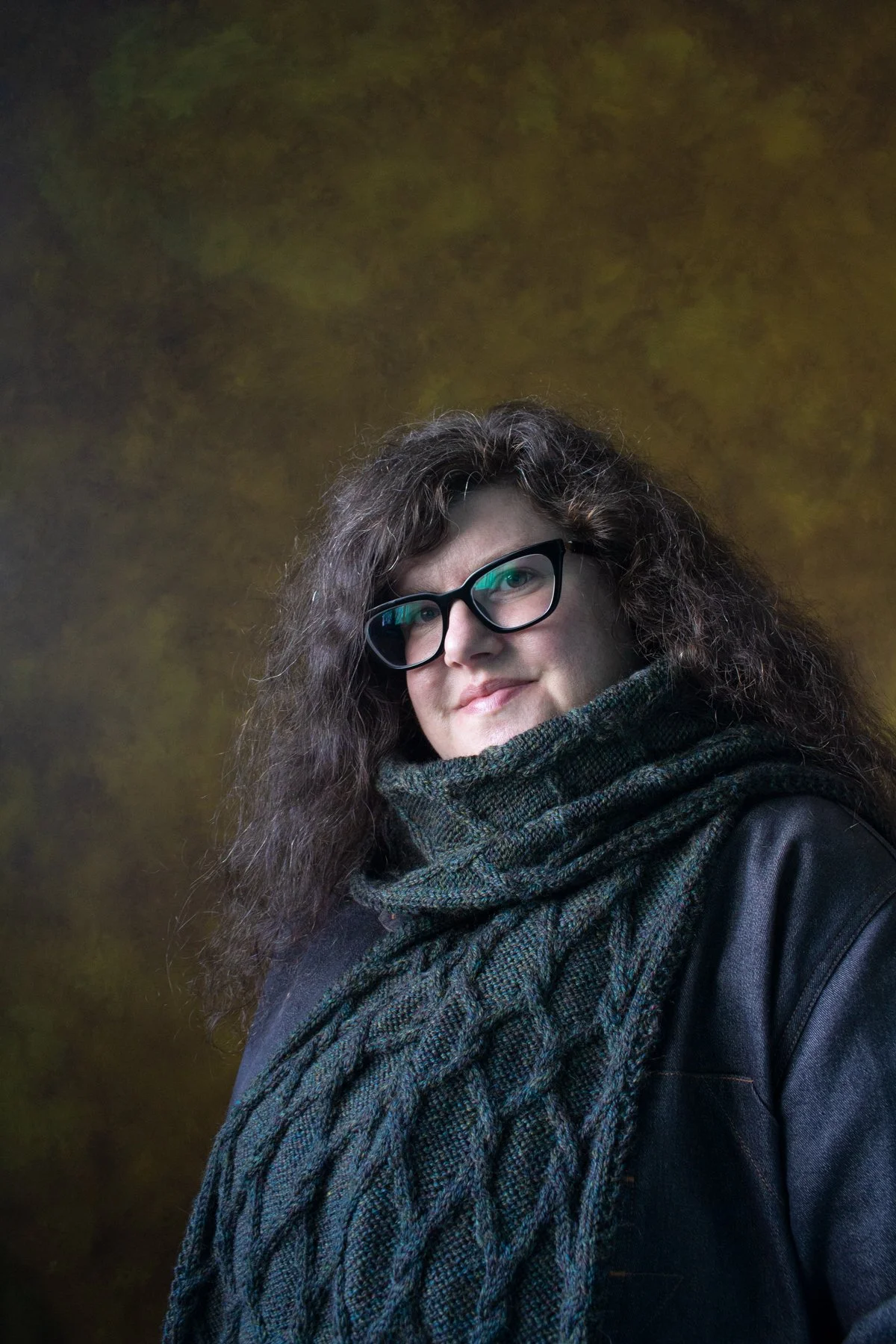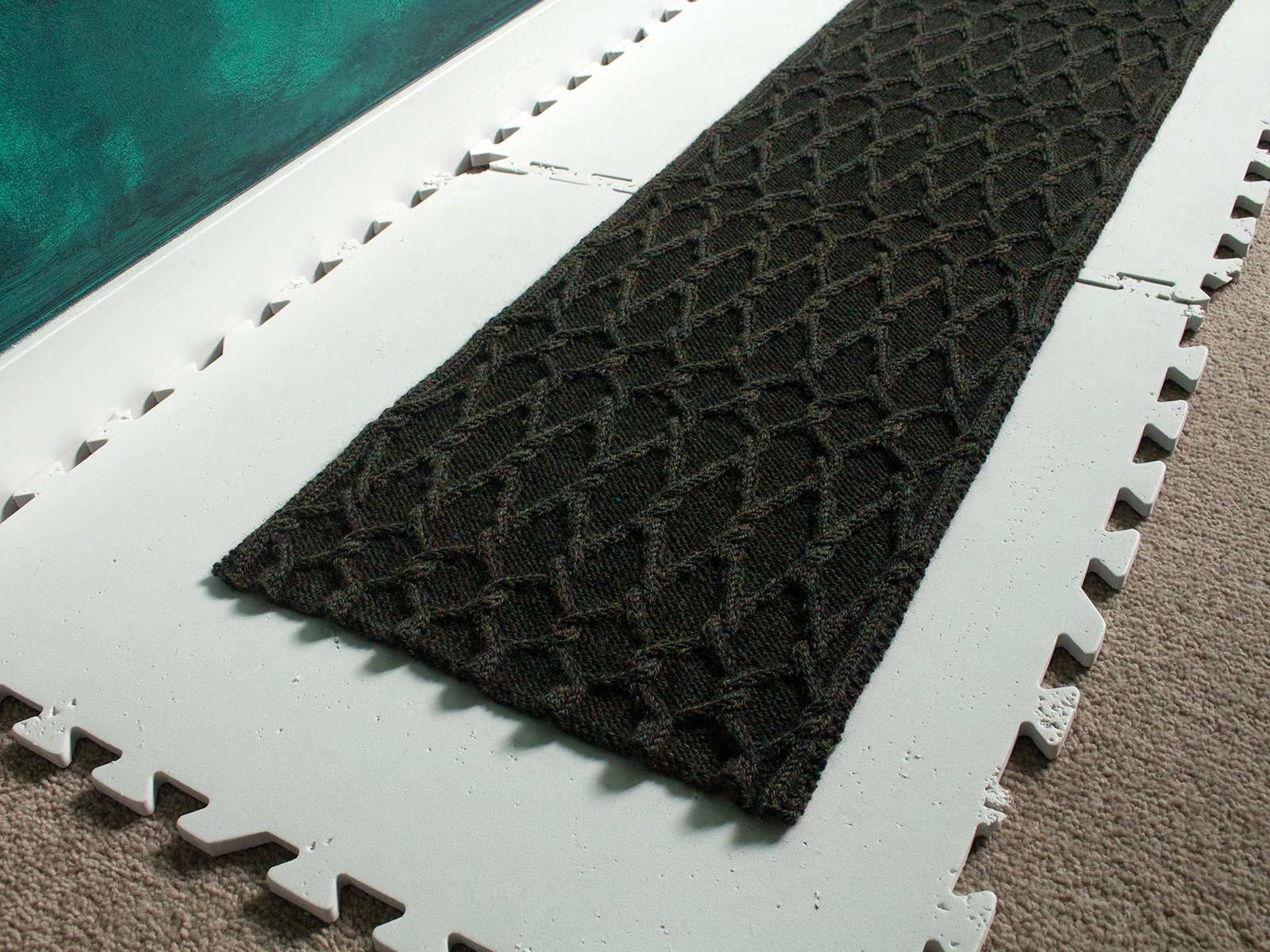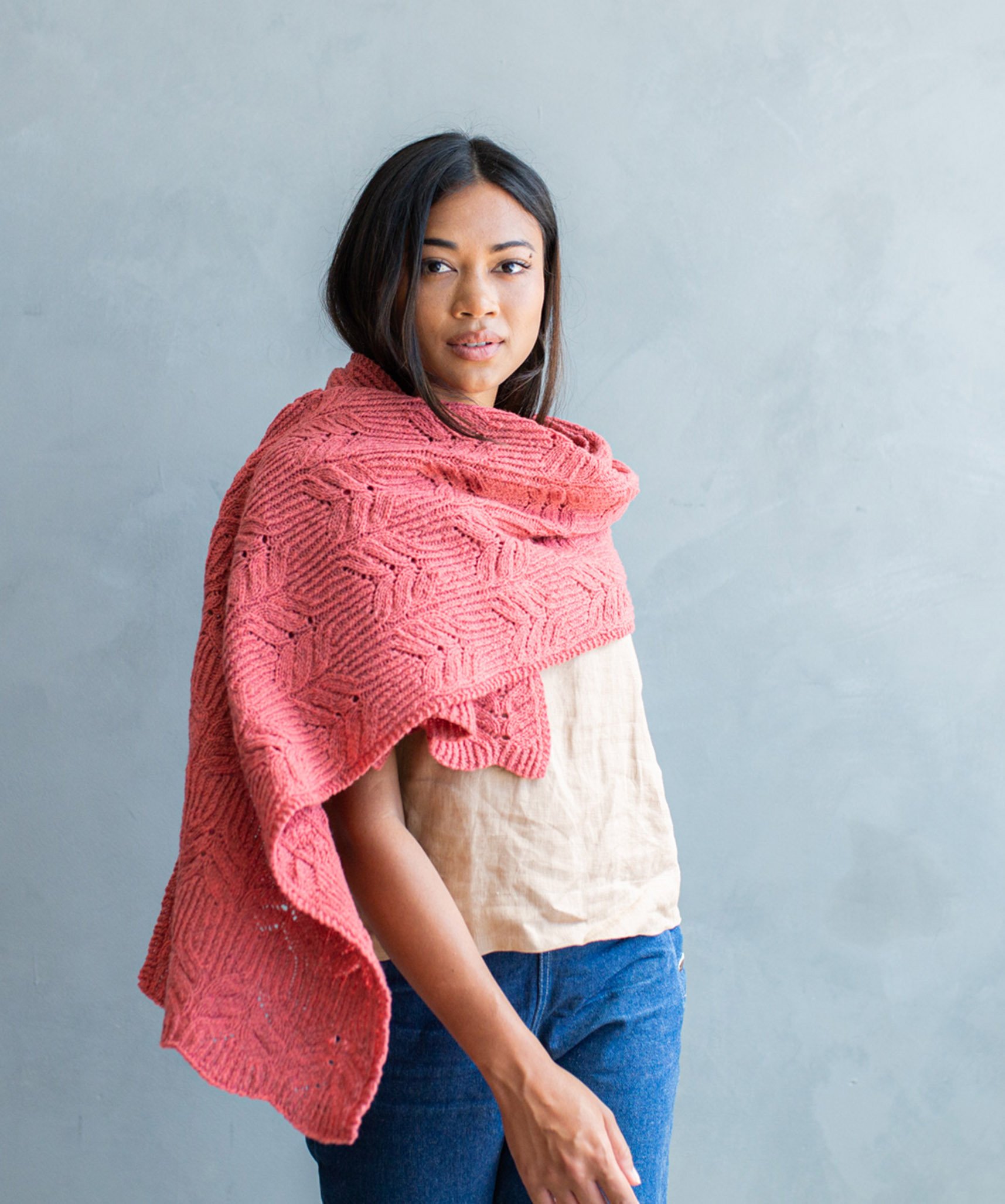I have two new patterns to share today, a cabled hat and scarf duo in DK weight yarn. The cable pattern reminds me of a formal garden with flower beds laid out in groups of interlocking shapes, a style called a ‘parterre’. The travelling cables create geometric shapes softened by twirling verticals. The Parterre Scarf has two options for the width, a classic scarf (shown here) and a wider wrap, and the Parterre Hat includes three sizes and can be styled with the brim turned up or down.
Inspiration & design journey
I really enjoy playing around with cables and seeing what kind of shapes and patterns I can make with them, often going through many iterations of charts and swatches before I find ‘the one’! This scarf design really came together when I introduced the areas of plain reverse stockinette. Alternating with the areas of denser cables, they provide calm spots among the twists and turns. In the matching hat, the reverse stockinette areas are introduced in the decreases section to help the crown cables pop.
Yarn requirements
For both hat and scarf samples I used Tweedy from Hedgehog Fibres, which is a non superwash DK weight yarn made up of 50% Falkland merino wool and 50% thread waste and recycled wool. The recycled content includes fun little pops of many different colours, and I enjoyed seeing them appear as I knit my samples. I used the colours ‘Dreaming in Light’ (a pale yellow) and ‘Lullaby’ (a warm lavender) for the hat samples, and ‘Amethyst’ (a cool lavender) for the scarf.
Parterre Hat features:
A beanie with intricate geometric cables
Three sizes are included, to fit 19 (21, 23)”/48.5 (53.5, 58.5)cm head circumference
Requires 140 (170, 207) yds/128 (156, 189)m of DK weight yarn (shown in Hedgehog Fibres Tweedy)
Choose a wool or wool-blend yarn in a tweedy, solid, or heathered shade
Hat dimensions, after blocking and unstretched:14.5 (16, 17.5)”/37 (40.5, 44.5)cm brim circumference, and 8 (8.5, 9)”/20.5 (21.5, 23)cm long from brim to crown. Lavender sample in Size 2 shown on my 22”/56cm head.
Parterre Scarf features:
A scarf with intricate geometric cables and areas of negative space
Two width options are included, and the length is easily adjustable to your preference
Requires 994 (1325) yds/909 (1212)m of DK weight yarn (shown in Hedgehog Fibres Tweedy)
Choose a wool or wool-blend yarn in a tweedy, solid, or heathered shade
Scarf dimensions, after blocking: 88”/224cm length and 10.25 (13.75)”/26 (35)cm width. Sample shown in narrower width option (10.25”/26cm).
Find out more about my Parterre Hat and Parterre Scarf patterns, including Ravelry and Payhip purchase options.
